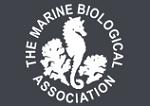APHOTOMARINE
An educational resource dedicated mainly to the photography
and diversity of marine life that can be found in coastal waters
and intertidal areas of Great Britain and Ireland by David Fenwick.

Aplidium cf. glabrum
- under rock / lowershore 1
Sea squirt
Aplidium cf. glabrum
- under rock / lowershore 2
Sea squirt
Aplidium cf. glabrum
- individual animal with rule 1
Specimen above was found under a rock in a lowershore pool at Chimney Rocks, Penzance, Cornwall. 10.04.12. SW4754329812.
Sea squirt
Aplidium cf. glabrum
- on rock / lowershore 1
Sea squirt
Aplidium cf. glabrum
- on rock / lowershore 2
Sea squirt
Aplidium cf. glabrum
- larvae close-up 1
Sea squirt
Aplidium cf. glabrum
- larvae close-up 2
Sea squirt
Aplidium cf. glabrum
- larvae close-up 3
Species / specimen above was found forming sheets on rocks and shells on the lowershore at Helford, Cornwall, 29.10.15.
This species is superficially similar to a species seen in marinas etc. on the south coast of the UK, including the south-west, it keys out as Aplidium glabrum, and has been called that by the American taxonomist Gretchen Lambert. However, A. glabrum is a boreal species that should not really be this far south (and is similarly 'northern' on the other side of the Atlantic). I suspect that ours in artificial habs might be a non-native that shares the same rather simplistic identification points with 'true' A. glabrum. Further comparitive work is needed.
Dr. John Bishop (MBA)
The bivalve mollusc seen nestling in this sea squirt is Modiolarca subpicta syn. M. tumida, the Marbled crenella.
APHOTOMARINE supports open source data recording and sharing for the benefit of wildlife, recorders, research, science and education. The project recommends the following websites and works with the following bodies and organisations.
The Marine Biological Association or MBA, based in Plymouth, is one of the world’s longest-running societies dedicated to promoting research into our oceans and the life they support. Since 1884 the MBA has been providing a unified, clear, independent voice on behalf of the marine biological community.It has a growing membership in over 40 countries.
The National Biodiversity Network or NBN is a charity that supports open source data sharing and recording supporting conservation, science and education. "Why do recorders need open source?". Simply because it supports the core values of wildlife recording and the free use of records and data over a very wide network that includes partners like the Natural History Museum.
The taxonomy used here is based on that of the following database, which is also used by the MBA, NHM and the NBN.
The World Register of Marine Species or WoRMS.

